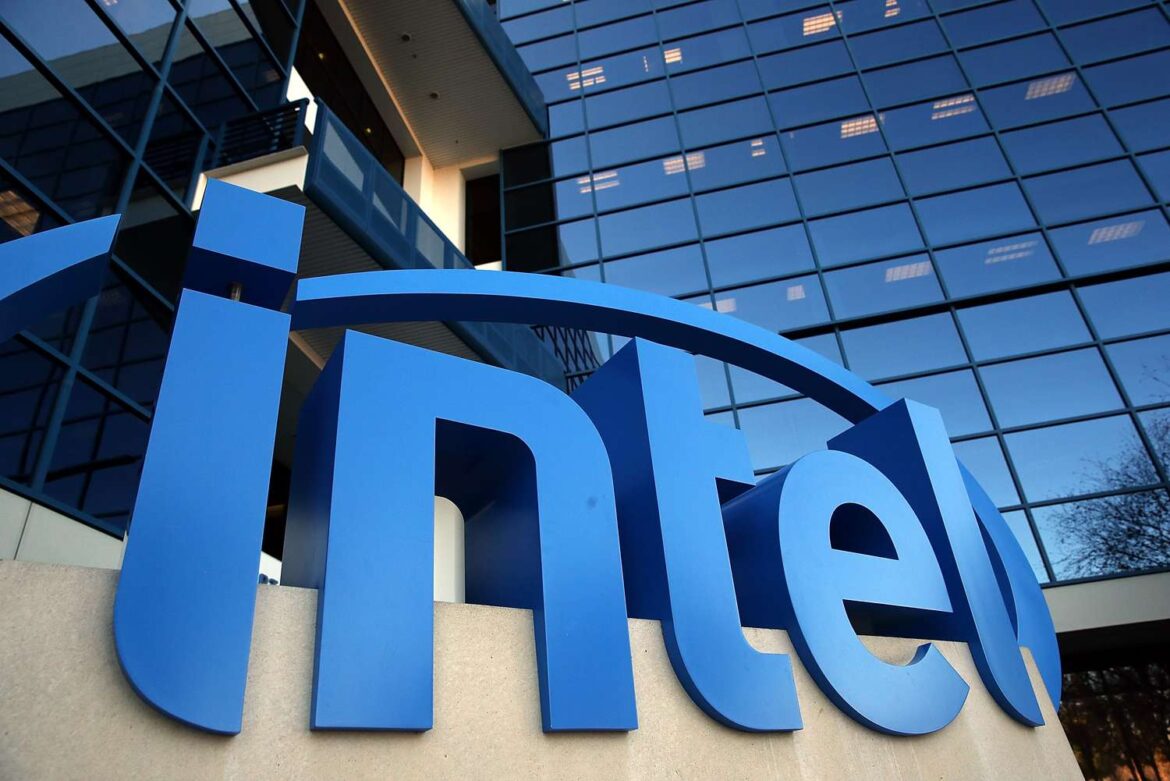Intel Corporation (NASDAQ: INTC) is still a commodore of the semiconductor market. It is a benchmark for a larger portion of the tech industry. Third-quarter investors are full of curiosity as they await the outcome of Intel’s stock change.
Company Performance and Financial Health
How the Intel company is doing financially and what its performance metrics say carries great importance when it comes to setting Q3 2024 expectations. In the first half of 2024, Intel managed to sail through some of the industries’ challenges. All by finding good solutions as the company was able to generate more than a 4th time the previous year’s revenue. The must-check financial indicators are as follows:
- Revenue Growth:
Intel’s outstanding revenue growth came from the strong purchase of the data center and the active sales of PCs. The company’s keen interest in high-performance computing and the use of AI has also been favorable. For example, Intel’s second-quarter 2024 revenue report was up 12% year-over-year, which was mainly due to the line-ups of strong businesses, including its Data Center (DCG) and Client Computing (CCG) segments.
- Profit Margins:
After the operational efficiencies and cost-cutting measures have progressed, the profit margins have started bouncing back. However, the semiconductor industry faces cyclical risks and fluctuating profit margins. The company’s direct margin boost to the level of 57% in the 2Q of 2024 from the earlier period of 52% shows certainly both better cost control.
- R&D Investment:
Intel’s Research and development (R&D) remains a significant investment for Intel. Enhancements in center technology and the subsequent processes are the key to claiming challenges. In 2024, Intel allocated 20% of its turnover to research and development.
Intel Stock Expectations and CFD Trading Strategies
Intel’s stock trading in Q3 2024 may be done via CFD trading, which may be an attractive alternative for those investors who are looking to invest in Intel. Choosing to trade as a contract for difference, the most powerful aspect of this technique is that transactions do not involve the real acquisition of the stock – the investor only observes the movements in the stock price. Theoretically, they can earn profits from both a decrease and an increase in the stock price. CFD trading is enabled by Intel’s earnings, market trends, and competition landscape, allowing investors to react nimbly to these indicators.
Market Trends and Demand Drivers
Intel’s stock strength will result from several market trends and demand drivers in the period ahead. The First…
- AI and Machine Learning:
The AI technology world sees a high demand for chip processors and data storage. The reshaping of a company’s competitive advantage in the AI chip area is likely to set Intel for the next highest financial terrains in the following 4 years. The segment of AI-based revenue of the company saw a rise of 25% in the existing year, thus standing out as a clear leader.
- Cloud Computing:
The growing importance of cloud computing and edge computing plays to Intel’s strength. Xeon processors will benefit Intel’s data center segment the most. The increase in business-level cloud services tends to massively support Intel’s revenues. The company’s cooperation with major cloud service providers like AWS and Google Cloud has been the key to its success in this aspect.
- PC Market:
The PC market is no longer new for our generation, although it still remains the lifeblood for the PC. The new work structure that comes with ultra-fast laptops and desktops with a great deal of flexibility has attracted the lately hybrid work model. Despite the slight contraction in global P/C shipments, I CG’s turnover still got a 5% increase in Q2’24.
Competitive Landscape
In the tech industry, some other firms, such as Advanced Micro Devices (AMD), NVIDIA, and the new chip makers, also think of mining intelligence. The competitive landscape is a strategic positioner for Intel and a source of its stock performance.:
- AMD and NVIDIA:
In the CPU sector, AMD has been the most serious contender complicating Intel’s situation with its Ryzen and EPYC processors getting larger and larger shares. NVIDIA being the ruler to the GPU market and coming into data center products are the next challenges for Intel. From its Q2 report, AMD reveals its revenue grew more than Intel’s which means Intel had to strive harder for more innovation and new customer acquisition.
- ARM-based Processors:
ARM, the so-called dark horse, allows traditional computers to downplay their reductions and takes hold more market share. In line with ARM architecture, Intel’s entry into the ARM basis and its well-thought-out partnerships should come next. Apple’s M-chip, based on ARM technology, operates more efficiently than previous models.
- Manufacturing Capabilities:
Intel’s production capabilities and use of advanced process nodes (e.g., 7nm, 5nm) are key strengths. Making a name for itself among others: the IDM 2.0 program created by Intel should serve to expand the manufacturing of the services already at their foundry and generate more investment in the technology of the process.
Strategic Initiatives and Innovations
Technology and creative thinking are vital for Intel’s development and market position.
- Process Technology:
In addition to the start of its 7nm and 5nm production and its conducting of progress in process technology are significant stages of evolution in Intel’s cause. Definitely, some 7 and 5 nm-sized chips will be able to process more data at higher speeds than the previous ones. While also consuming less energy thus making the product line of Intel stronger, which is most preferable. Intel’s decision to go into production by 2024, aligned with its 20A (2 nm) node, can be considered one of the significant drivers in the growth of the technology sector.
- The field of AI and Quantum Computing:
The company’s involvement in AI and quantum computing technologies is the long-term perspective for growth. Progress in these segments creates additional revenues and brings new technologies that will help Intel to keep its leadership in the field. Their research on neural computing and the result of the first 3 quantum chip prototypes supports the guess.
- Strategic Partnerships: Partnerships and collaborations with other tech companies, research institutions, and startups can accelerate innovation and market penetration. Intel’s inventive toolkits and packets for initial and used data have become an industry standard. The alliance with AI startups and academic institutions is to be the fresh knowledge base that drives progress at the more advanced level.
Economic Conditions and External Factors
More concrete economic conditions and external factors to guarantee Intel’s stock performance have to be taken into consideration:
- Global Economic Health: The global economy affects customer spending, business investment, and demand for technology. Slowdowns in economic growth and conflicts among countries can have a direct negative effect on Intel’s sales and supply chain. The fight against COVID-19 and the economic and political standoff between the US and China are the issues that need to be weighed.
- Regulatory Environment: The Intel business is, among other reasons, impacted by policy shifts particularly to tariffs, trade, and the regulatory environment. Adapting to these complexities means strategic vision and flexibility. Intel’s compliance with ultramodern protective privacy laws and its fight for policy reformation are some of Intel’s weapons in implementing its strategy.
Analyst Predictions and Market Sentiment
Providing both experts’ forecasts and registers reflecting the market mood can totally disclose Intel’s stocks’ perspective for Q3 2024 as follows:
- Earnings Estimates:
What analysts think earnings of Q3 2024 will be can be taken as an indicator of the market’s expectations. Provisions in net earnings predictions are the catalysts. It can increase stock prices, and the opposite situation can happen when net earnings predictions are decreased. Based on the current situation, analysts estimate that the company’s net profits will increase by 10% year-over-year to Q3 2024.
- Stock Ratings:
The overall stock ratings of analysts can be good indicators of the general sentiment of the capital markets (i.e., buy, hold, or sell). Intel’s prospects, its real strengths against competitors, and how market trends are shaping. Most analysts maintain a ‘buy’ or ‘hold’ rating on Intel, pointing to its solid fundamentals and potential for growth.
- Valuation Metrics:
Valuation metrics and data such as the price-to-earnings (P/E) ratio, price-to-sales (P/S) ratio, and enterprise value-to-EBITDA (EV/EBITDA) ratio are considered. Intel’s P/E ratio at present is slightly less than the median of the industry. This could provide a situation of possible undervaluation along with recognition of the upside potential if any.
Outlook for Q3 2024
Intel’s stock performance in Q3 2024 will be the result of various factors from both inside and outside the company. The company’s financial performance, market trends, competitive dynamics, strategic moves, and the larger economy will all play a part in shaping the expectations of investors.
- Positive Catalysts:
Artificial intelligence implementations with intangible innovations are the main drivers in the AI field. The transition to advanced process nodes and strategic partnerships are also potential successful factors. Most likely, the upcoming release of the proposed new AI-optimized processors and the launch of a new foundry service pathway will lead to the company’s progress by about ten times.
- Challenges and Risks:
Pressure from competitors like Advanced Micro Devices Inc., NVIDIA Corporation. ARM-based processors, potential results of supply chain disruptions, and the situation of the wide economy are a couple of problems, among many others. One of the major tasks that Intel has is to handle these problems through strategic engagements and operational efficiencies.
- Investor Confidence:
The nature of investor anxiety in Intel’s capacity to withstand these odds and utilize other opportunities fully remains the decider. Through inspiring and persuasive leadership, clear and disciplined management. The accomplishment of the strategic course of action, the company will build and garnish this confidence. The developer of the upcoming Intel investor day, as well as the supplier of quarterly earnings calls. The calls will be the ones proving that the investor’s sentiment and the overall strategy are moving in the right direction.
Eventually, on the one hand, Intel is challenged by an informative and rival environment. But on the other hand, it has enough muscles and technological power to stutter innovation in the market. Making it stand tall in key areas like IoT, AI, and 5G. Investing in the third quarter of 2024 would mean monitoring quite a few factors. Factores such as the stock market trends, technological advancements done by competitors. The economic environment, to make wise decisions about Intel’s stock. Consequently, being on a continuous increase and reinvention mode for Intel. Whichever developments will be created by its ability to shape and move ahead in the tech race are to be key conditions for both its growth and stock performance.



